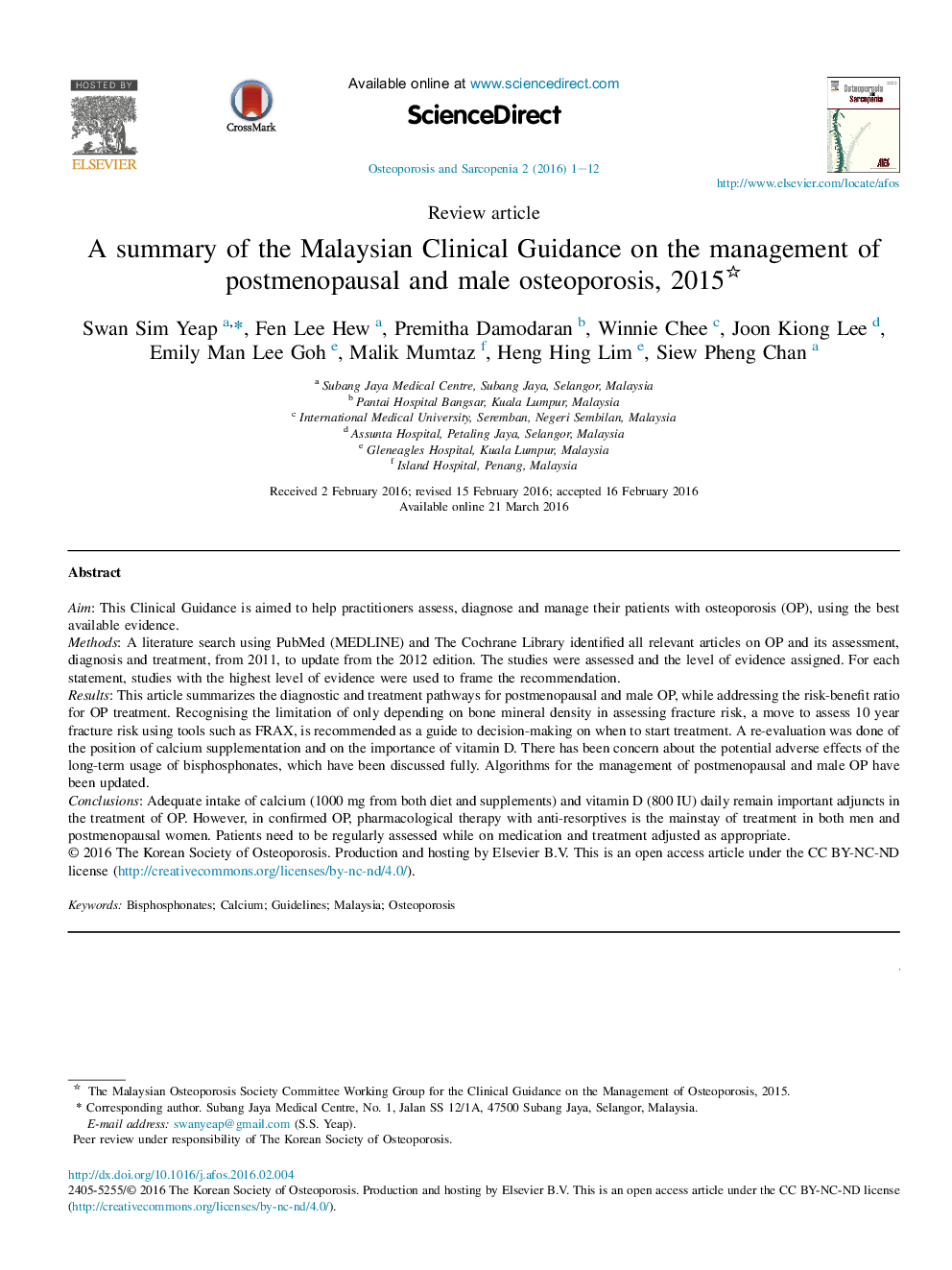| Article ID | Journal | Published Year | Pages | File Type |
|---|---|---|---|---|
| 3277892 | Osteoporosis and Sarcopenia | 2016 | 12 Pages |
AimThis Clinical Guidance is aimed to help practitioners assess, diagnose and manage their patients with osteoporosis (OP), using the best available evidence.MethodsA literature search using PubMed (MEDLINE) and The Cochrane Library identified all relevant articles on OP and its assessment, diagnosis and treatment, from 2011, to update from the 2012 edition. The studies were assessed and the level of evidence assigned. For each statement, studies with the highest level of evidence were used to frame the recommendation.ResultsThis article summarizes the diagnostic and treatment pathways for postmenopausal and male OP, while addressing the risk-benefit ratio for OP treatment. Recognising the limitation of only depending on bone mineral density in assessing fracture risk, a move to assess 10 year fracture risk using tools such as FRAX, is recommended as a guide to decision-making on when to start treatment. A re-evaluation was done of the position of calcium supplementation and on the importance of vitamin D. There has been concern about the potential adverse effects of the long-term usage of bisphosphonates, which have been discussed fully. Algorithms for the management of postmenopausal and male OP have been updated.ConclusionsAdequate intake of calcium (1000 mg from both diet and supplements) and vitamin D (800 IU) daily remain important adjuncts in the treatment of OP. However, in confirmed OP, pharmacological therapy with anti-resorptives is the mainstay of treatment in both men and postmenopausal women. Patients need to be regularly assessed while on medication and treatment adjusted as appropriate.
